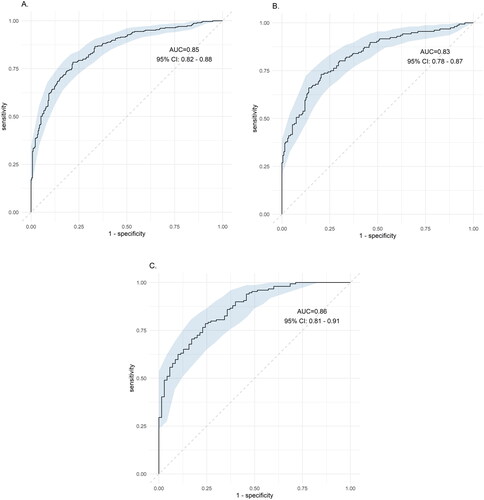Figures & data
Table 1. Baseline characteristics among the lean controls, lean NAFLD, simple overweight/obesity and overweight/obesity NAFLD groups.
Table 2. Relation between the serum adiponectin-leptin ratio and metabolic factors in multivariate linear regression models after adjusting for age and sex.
Table 3. Odds ratios of having NAFLD in relation to the serum tertile of adiponectin-leptin (AL × 103) ratio using multiple logistic regression analyses.
Table 4. Odds ratios of having NAFLD in relation to serum tertile of adiponectin leptin level using multiple logistic regression analyses, stratification by BMI.
Figure 1. Receiver operating characteristic (ROC) for the diagnosis of NAFLD. Except adiponectin-leptin ratio, BMI, triglyceride and AST/ALT ratio were selected. (A) All subjects, AUROC was 0.85 (95% CI: 0.82–0.88), (B) female subjects, AUROC was 0.83 (0.78–0.87), and (C) male subjects, AUROC was 0.86 (081–0.91). All p < .001.

Data availability statement
The datasets used and/or analysed during the current study are available from the corresponding author on reasonable request.
